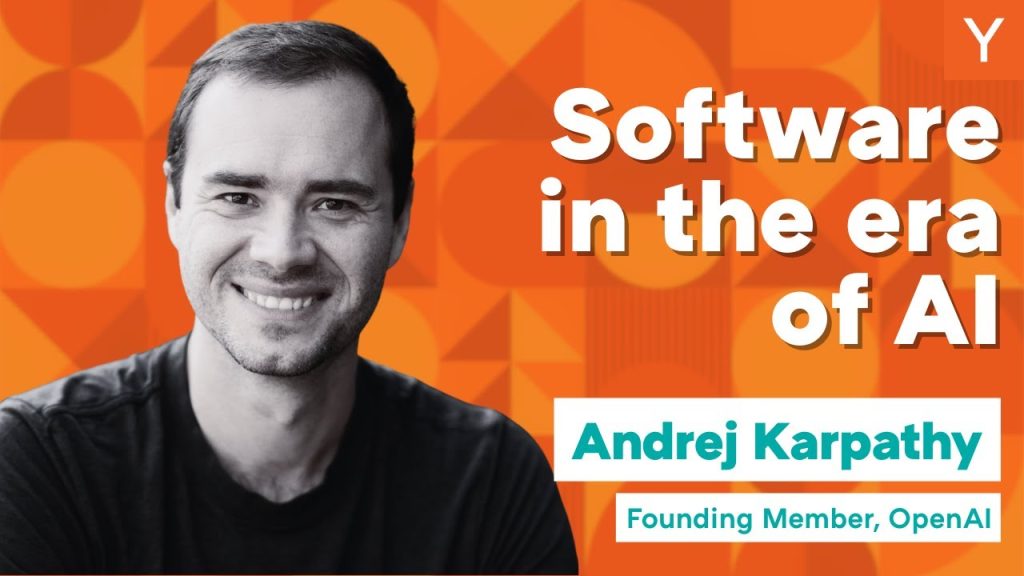June 21, 2025, 3:55 pm IDT
Updated: June 21, 2025, 7:29 pm IDT
“We are in the mainframe and time-sharing era of computing” for LLMs, akin to the 1960s.
Billions of people now have unprecedented access to this new computational power.
The very fabric of software is undergoing a fundamental transformation, shifting paradigms that have defined computing for decades. Andrej Karpathy, a luminary whose influence spans Stanford, OpenAI, and Tesla, illuminated this profound evolution during his keynote at the Y Combinator AI Startup School in San Francisco. His insights focused on the dawn of “Software 3.0,” where natural language emerges as the new programming interface, ushering in an era of unprecedented accessibility and a re-imagining of computing itself.
At the heart of this shift is the transition from traditional, manually written code (Software 1.0) and neural network weights trained on vast datasets (Software 2.0) to Large Language Models (LLMs) programmed directly through natural language prompts. Karpathy posited, “The hottest new programming language is English,” underscoring how this change democratizes software creation, allowing billions who speak natural languages to engage with computing in ways previously unimaginable.
LLMs are more than mere tools; they represent a new computational paradigm. They exhibit properties akin to utilities, with substantial capital expenditure required for their training and operational expenditure for serving intelligence via increasingly homogeneous APIs. Furthermore, they share characteristics with semiconductor fabs, demanding massive investment in deep tech R&D. But perhaps most significantly, Karpathy argued, LLMs function as a nascent form of operating system, mirroring the centralized, expensive, and time-shared mainframe computers of the 1960s.
Understanding the emergent “psychology” of these LLMs is paramount for effective human-AI collaboration. Karpathy characterized LLMs as “people spirits”—stochastic simulations of human cognition, possessing encyclopedic knowledge and superhuman capabilities in certain domains. However, he cautioned against anthropomorphizing them entirely, noting their “jagged intelligence” and cognitive deficits such as hallucinations, insufficient self-knowledge, and a form of anterograde amnesia where they lack continual learning outside their immediate context window. They are fallible systems requiring careful management.
This duality necessitates a shift in how applications are designed, favoring “partial autonomy” rather than fully independent agents. Karpathy advocated for human-AI collaboration loops where AI handles generation, and humans provide rapid verification and oversight. Products like Cursor and Perplexity exemplify this, integrating LLMs to manage context, orchestrate calls to multiple models, and offer application-specific graphical user interfaces (GUIs). Crucially, these systems feature an “autonomy slider,” allowing users to dial in the desired level of AI control, from simple code completion to more expansive, agentic operations. The goal is to make verification “easy, fast to win,” ensuring that humans remain effectively in the loop, auditing the AI’s output.
The implications of Software 3.0 extend beyond the developer’s desk. The rise of “vibe coding,” where individuals use natural language to conjure software solutions, signals a future where programming is ubiquitous. This new era demands a re-evaluation of digital infrastructure, preparing it to serve not just humans via GUIs or traditional computers via APIs, but also these new, human-like agents. Just as robots.txt guides web crawlers, new protocols will emerge to instruct LLMs on interacting with digital domains.
In essence, Karpathy concluded, “We are in the mainframe and time-sharing era of computing” for LLMs, akin to the 1960s. Billions of people now have unprecedented access to this new computational power. The challenge and immense opportunity before founders, VCs, and AI professionals is to program these new machines, to build the next generation of software, and to architect a future where human ingenuity is augmented by intelligent, yet carefully managed, AI.

